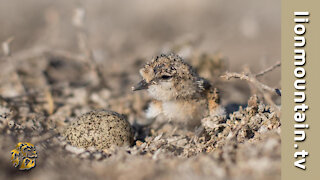Rainbow Lizard
Agama is a type of lizard. There are more than 60 species of agama that are native to Africa, Europe, and Asia. Agamas are the most dominant type of lizards in Africa. They are very flexible animals that can easily adapt to the changes in their environment. In the past, agamas were living in the forests of Africa. When forests began to disappear, agama managed to adapt to life in open spaces. Most species of agama live in mountains, rocky steppes, and arid areas. Certain species of agama have adapted to life in both rural and urban areas. Some people keep agamas as pets because of the beautiful coloration of their bodies. Agamas are not listed as endangered animals.
Red-headed rock agamas can be found native in countries such as Benin, Burkina Faso, Cameroon, Cabo Verde, Chad, Gabon, Ghana, Guinea, Guinea-Bissau, Kenya, Liberia, Mali, Mauritania, Nigeria, Senegal, Togo, and Madagascar. These lizards live in deserts, savannas, forests, and mountains. They also occur in urban and suburban areas. They are a semi desert-dwelling species that live within rock crevices. If close to man, they may even live within their huts or gardens.
The male African Red Headed Agama has a bright red head and a deep blue body. These colors may intensify during the breeding season. Females and young male Red Headed Agamas are olive green or brown with cream-colored bellies. This reptile can grow to be about 14 inches long from tip to tail. Agama lizards are sometimes called rainbow lizards because of the colorful displays put on by the dominant males. While most agamas are green and brown, dominant males show off by rapidly turning their bodies blue and their heads bright red or yellow. Changes in coloration play a key role in their behavior, communication, and reproduction. They reach an adult length of around 12 to 14 inches heads to the tip of tail, males tend to be slightly larger than females. Agamas communicate mainly with their bodies, either through movements and postures or by changing colors. Red-headed agamas spend their days hunting for food, basking in the sun, and occasionally seeking out a bit of shade to cool down.
Most agamas live in small groups with the dominant male ruling over several females and sub-males. While sunning themselves each morning, the dominant male will claim the most elevated spot, with subordinates in lower areas. Agamas hunt by the vision and prefer to wait for an insect to come by. Their sticky tongues help them hold onto prey.
Agamas mainly eat insects, especially ants, grasshoppers, beetles, and termites. They will also consume berries, other fruit, seeds, eggs, flowers, grasses, and even small mammals. They wait in shadows for prey to pass by. When it does, they give chase and catch it, usually with the aid of their sticky, mucous-coated tongues.
Females are sexually mature at age 14 to 18 months; males reach maturity at 2 years. Only the dominant male mates with the females in his territory. Mating tends to occur in the wet season, but agamas can breed any time they have access to water. A male courts a female by head-bobbing to her. After mating, the female digs a two-inch (5-cm)-a deep hole in moist, sandy soil where she lays five to seven eggs. During the day, she leaves the top open so that the sun can warm the eggs; at night, she covers the hole with plant matter. Hatchlings emerge in eight to ten weeks.
The International Union for Conservation of Nature (IUCN) has not evaluated this lizard, however, there are no significant threats to this species.
-
 0:09
0:09
marklebl
2 years agoRainbow from Sprinkler....
31 -
 0:07
0:07
mongo14
2 years agorainbow from my porch
291 -
 2:18
2:18
Lion Mountain TV
3 years ago $0.01 earnedAfrican Skimmers Protecting Their Chicks from Monitor Lizard.
67 -
 17:10
17:10
MetalManProductions
2 years agoForging a lizard from a railroad spike
21 -
 1:12
1:12
reptiletrainer
2 years agoStunt Lizard Leaps to Man From Tree
29 -
 8:24
8:24
SaturdayMorningInspection
16 hours ago $0.01 earnedTexans Just Got A FREE AGENT STEAL
17.9K5 -
 21:17
21:17
Brewzle
18 hours agoBottling Our Barrel Picks at Cathead Distillery!
28.8K8 -
 9:43
9:43
Blue Siesta ASMR
20 hours ago $0.03 earnedASMR Hotel Check-In Roleplay | Soft Spoken
31.9K29 -
 12:33
12:33
Precision Rifle Network
14 hours agoWind Calling - Holdover vs. Dialing - Long Range Shooting
24.7K13 -
 3:28:39
3:28:39
Akademiks
10 hours agoDRAKE FIRES on Kendrick Lamar ! HOLLY ! BLOCK IS BEING SPUNN!!!!!
93.9K70